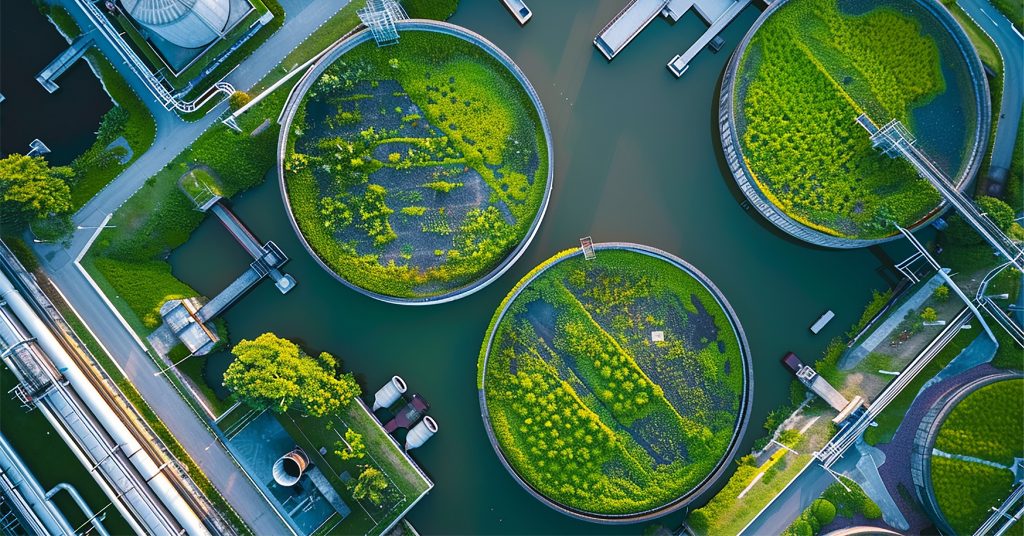Oman, a nation known for its stunning landscapes and rich cultural heritage, faces the growing challenge of balancing rapid urbanization with environmental sustainability. As cities expand and populations increase, the need for effective wastewater management has become more critical than ever. A modern sewage treatment plant is at the heart of this effort, playing a vital role in maintaining public health, protecting natural resources, and ensuring that Oman’s water supply remains clean and safe for future generations.
The significance of modern sewage treatment plants in Oman cannot be overstated. These facilities are essential in managing the wastewater generated by residential, industrial, and commercial activities, which, if left untreated, could lead to severe environmental degradation and public health crises. This blog delves into the operation of modern sewage treatment plants in Oman, exploring the sewage treatment plant process, types, and technological advancements that make these plants indispensable in the country’s drive toward sustainability.
What is a Sewage Treatment Plant?
A sewage treatment plant is a facility designed to remove contaminants from wastewater, primarily from domestic sewage. The primary objective of a sewage treatment plant is to produce environmentally safe treated effluent and solid waste (sludge) suitable for disposal or reuse. It also helps in maintaining public health and protecting the environment. By processing and purifying this water, sewage treatment plants help prevent the spread of waterborne illnesses and reduce the contamination of rivers, lakes, and coastal areas.
In Oman, where water scarcity is a significant concern, sewage treatment plants are pivotal in conserving water. The treated water, often referred to as reclaimed water, is utilized for non-potable purposes, such as landscaping, agriculture, and industrial processes. This not only reduces the demand for freshwater but also supports sustainable water management practices, crucial in a country with limited natural water sources.
Elements of a Sewage Treatment Plant
A sewage treatment plant is composed of several key components that work together to process wastewater and remove pollutants. The main elements include:
- Preliminary Treatment
- Primary Treatment
- Secondary Treatment
- Tertiary Treatment
Modern technology has significantly enhanced the efficiency and effectiveness of sewage treatment plants in Oman. For instance, advanced monitoring systems allow for real-time tracking of the treatment of sewage treatment plant process, ensuring that the plant operates optimally at all times. Moreover, the use of energy-efficient equipment and processes helps reduce the environmental footprint of these facilities, aligning with Oman’s sustainability goals.
Types of Sewage Treatment Plants
In Oman, the choice of plant type often depends on factors such as population density, industrial activity, and the availability of land and water resources. The most common types of sewage treatment plants include:
- Activated Sludge Plants (ASP): ASPs use aeration tanks to mix wastewater with biological sludge composed of microorganisms. The microorganisms break down the organic matter in the wastewater, and the treated water is then separated from the sludge, which can be reused or disposed of.
- Membrane Bioreactors (MBR): MBRs are a more advanced type of sewage treatment plant that combines biological treatment with membrane filtration. The membranes act as a physical barrier, allowing only clean water to pass through while retaining the microorganisms and solids. MBRs are highly effective in removing contaminants and are commonly used in areas with stringent water quality requirements.
- Sequencing Batch Reactors (SBR): SBRs treat wastewater in batches rather than continuously. This sewage treatment plant process involves filling a reactor with wastewater, aerating it to encourage biological treatment, and then allowing the treated water to settle before it is discharged. SBRs are particularly useful in smaller communities or areas with fluctuating wastewater flows.
- Rotating Biological Contactors (RBC): RBCs use a series of rotating discs partially submerged in wastewater. As the discs rotate, they expose the wastewater to the air, promoting the growth of a biofilm on the surface of the discs. This biofilm breaks down organic pollutants as the wastewater passes over it. RBCs are a cost-effective option for smaller communities or specific industrial applications.
Ion Exchange’s Advanced Sewage Treatment Solutions for Oman
Ion Exchange is a leading provider of innovative water and wastewater treatment solutions in Oman. Their advanced range of sewage treatment plants is designed to meet the diverse needs of the country’s growing population and industrial sectors. With a focus on sustainability and efficiency, Ion Exchange offers customized solutions that incorporate the latest technologies, ensuring optimal performance and environmental compliance.
INDION New Generation Packaged Sewage Treatment Plant (NGPSTP)
It is a state-of-the-art solution that combines the innovative technologies of lamella plate clarification and aeration, resulting in a highly efficient, ready-to-operate, prefabricated system for sewage treatment. This all-in-one single-tank packaged system is designed with a modular capacity ranging from 10 to 100 m3/d, making it both compact and user-friendly. Not only does it deliver high-quality effluent, but it also boasts features that cater to the specific needs of modern facilities. The NGPSTP’s advantages include minimal land usage, reduced power and chemical requirements, and low operating costs, making it an ideal choice for a wide range of applications while ensuring environmental sustainability and cost-effectiveness.
INDION NGPSTP-NR
It is an advanced sewage treatment solution that combines a fixed film reactor with lamella clarification, resulting in a high-performance, prefabricated system that is ready to operate. This all-in-one, modular design offers compact and simple operation with minimal maintenance. Built with an MS tank lined with FRP, it ensures no corrosion, delivering high-quality effluent while being efficient and easy to manage.
Sequencing Batch Reactor (SBR)
It is an advanced activated sludge process that operates in true batch mode, with both aeration and sludge settlement occurring within the same tank. Unlike conventional continuous-flow systems, which separate these functions into different spaces, the SBR performs them in a time sequence, offering greater flexibility. This design allows the SBR to handle varying influent volumes, making it adaptable to changing conditions, unlike the continuous system, which relies on a fixed flow rate.
Advanced Fluidized Media Reactor (AFMR) system
It is a compact SINGLE TANK DESIGN UNIT that integrates an aeration tank with floating media, a lamella settler, and a chlorine contact tank. The AFMR media boasts a high surface area, excellent physical and chemical resistance, and minimal annual losses. INDION’s Advanced FMR offers significant advantages, including reduced space requirements, lower power consumption due to the elimination of sludge recirculation, and minimal maintenance thanks to its design without moving mechanical parts.
Conclusion
The importance of modern sewage treatment plants in Oman cannot be overstated. These facilities are essential in managing the wastewater generated by the country’s growing population and industrial activities, ensuring that the water is treated and purified before being released back into the environment or reused for non-potable purposes. By incorporating advanced technologies and adopting sustainable practices, Oman’s sewage treatment plants are playing a crucial role in protecting public health, conserving water resources, and supporting the country’s long-term sustainability goals.


